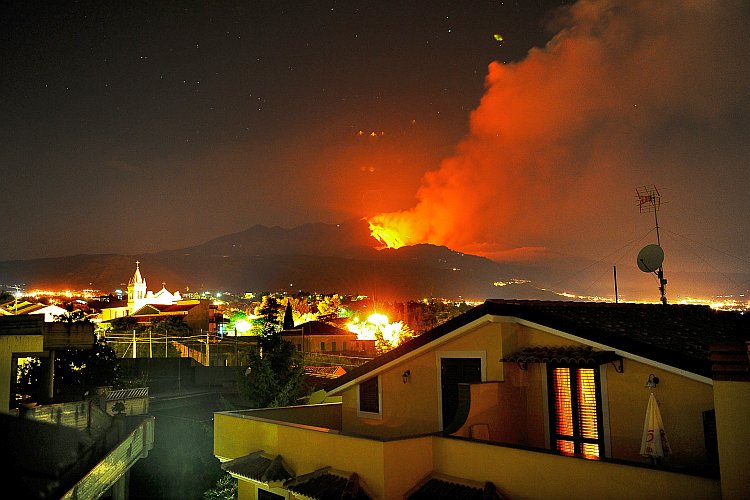ASTI, Italy—In the early morning of Jan. 5, the new southeast crater of Mount Etna in Sicily unleashed a violent volcanic eruption, creating a column of ash more than 3 miles high. The Sicilian volcano’s eruption came after an inactive period dating back to Nov. 15, 2011.
After the first explosions within the crater were heard at 10:00 p.m., Jan. 4, the activity of the volcano became increasingly intense.
According to the Italian National Institute of Geophysics and Volcanology, as in the eruptions of the past, there were fountains and lava flows in different directions from different mouths of the crater and a column of gas and ash about a mile high was generated.
The violent fallout of eruptive material over the sides of the mountain has generated a flow of magma and hot gases on the snow-covered ground, causing violent explosions, but no earthquakes. The ash and lapilli (rock fragments ejected from a volcano during an explosive eruption) have mainly affected the southern slope of the volcano. [video]http://www.youtube.com/watch?v=KUlB1q_VYaU[/video]
Immediately following the eruption, the crisis unit of the Catania Fontanarossa International Airport limited air traffic, but after the emissions of volcanic ash stopped, airspace was reopened without limitations.
Mt. Etna is the largest volcano in Europe and among the world’s most active.
Since the late ‘70s, the explosive eruptive episodes in the craters of Mt. Etna have increased. This was most evident in the period from 1995 to 2001, which saw a sharp increase in lava fountains (known as paroxysms) and columns of gas and ash. From 2002 to 2003, there was an intense production of pyroclastic material (bombs, lapilli, ash), which continued for several weeks.




